Safety is everything, and it all starts with wearing the right life jacket.
At BOATsmart!, we’re all about having lots of fun on the water, and we’re all about doing so safely. In the Golden State, water is everything. California has miles upon miles of stunning beachfront and waterfront, with over 1,000 miles of lakes and oceans to explore. There’s simply no shortage of water fun waiting for California boaters and swimmers. The sheer amount of water activities available to Californians make it an instant favorite for water aficionados like us.
While there is nothing that compares to boat days, jet ski excursions and floating in the water, none of it matters without a focus on safety at every point. One of the most vital parts of water safety that no one should forget? The importance of wearing a life jacket — better known as a good life jacket — every time you are out on the water.
Here is everything you need to know about California’s life jacket law.
Who is required to wear a life jacket in California?
Under 13: According to California state law, every person under 13 years of age must wear a life jacket on any recreational vessel. It must be a Coast Guard-approved life jacket appropriate for the activity that they are engaging in.
Motorcraft: Every person on a water ski, operating a personal watercraft or being towed behind a vessel, must also wear a life jacket.
16-feet or Less: On any boat, 16 feet long or less—including canoes and kayaks of any length—Coast Guard-approved life jackets must be carried for each person on board. Each person must be made aware of the location of life jackets.
16-feet or More: On vessels longer than 16 feet in length, there must be at least one Type IV throwable device designed for throwing into the water and a life jacket for each person onboard.
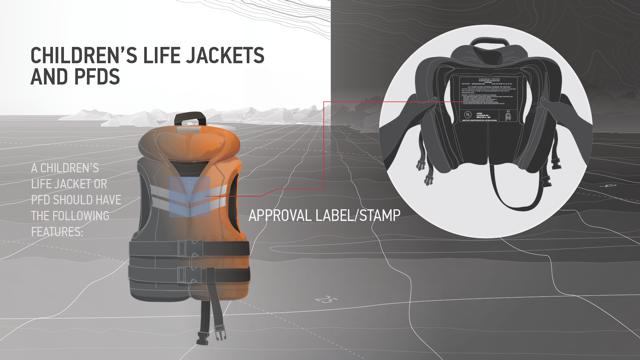
Exceptions to California life jacket laws
Children under the age of 13 are exempt from wearing a life jacket if they are on a harness tethered to a sailboat, in an enclosed boat cabin or on an emergency vessel.
Those using underwater maneuvering devices are also exempt from wearing a life jacket in California.
Why should I wear life jackets in California?
While everyone may not legally be required to wear a life jacket in California, there are safety advantages. If the temperature changes, current changes or hidden hazards, even the best swimmer can benefit from wearing a life jacket.
According to the National Park Service, the top cause of death in national parks is drowning. Most drowning death occurs close to shore and within close proximity to a life jacket. The NPS recommends that everyone wear a life jacket, no matter what water activity is being engaged in. By ignoring safety precautions, you are putting yourself and others at risk.
For pet owners — if you bring your pup on board, make sure they are also protected. Animal life jackets are a great investment for your pet and are a surefire way to ensure safety.
Fines for non-compliance
In the state of California, life jacket violations are considered infractions. Violators can be fined up to $250.
Who enforces life jacket laws?
In the state of California, the Division of Boating and Waterways’ Enforcement Unit enforces laws on the water. From checking for Boater Cards to enforcing life jacket laws, the Enforcement Unit is nearby to keep California boaters and swimmers safe and in compliance with the law.
Life jacket requirements in California
Life jacket laws require wearers to use Coast Guard-approved life jackets, and Coast Guard-approved life jackets must be available to each boat passenger. Appropriate life jackets should be the right size for the wearer and be maintained in good condition.
Everyone on board should feel confident in the integrity of the life jackets available to them.
What are the different types of life jackets?
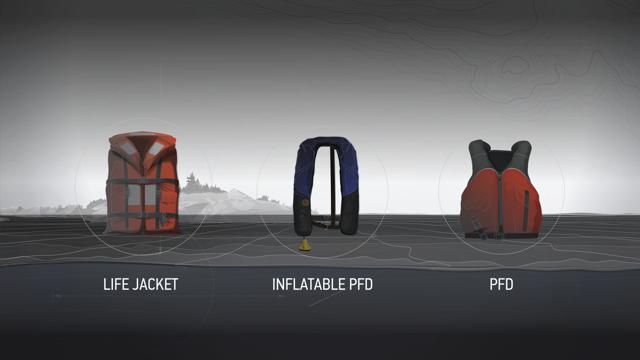
Life jackets — which used to fall in the category of Personal Flotation Devices (PFD’s) in the states — come in several classifications, which have changed and evolved over time. While the classification process is now different, life jackets classified by type are still allowed and approved by the Coast Guard, as long as they’re in good condition.
By knowing the different types of classifications, you’ll be able to pick out the perfect life jacket for you and your needs.
Old US Life Jacket Terminology
Though now known as the old labeling system, types were considered a great way to label life jackets in the past. Life jackets and PFD’s with these older labels — the type labels — are still fine to use and are approved, but they are being phased out and replaced with new labels as time goes on.
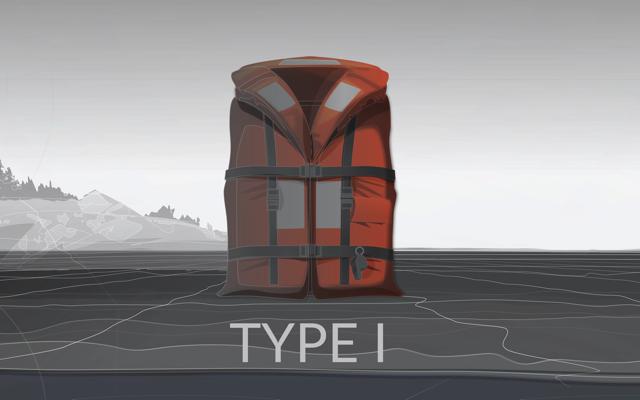
Type I PFD’s – Inherently Buoyant: Type I Personal Flotation Devices are good for every kind of water condition, from the calmest of waves to the roughest of waters. They’re not a lightweight type of life jacket, but their bulkier build makes them incredibly buoyant. When wearing a Type I PFD, most unconscious individuals will be turned face-up.
Inflatable Type I PFD Minimum Buoyancy: a minimum of 33.7 lb
Foam Type I PFD Minimum Buoyancy: a minimum of 22.5 Ibs
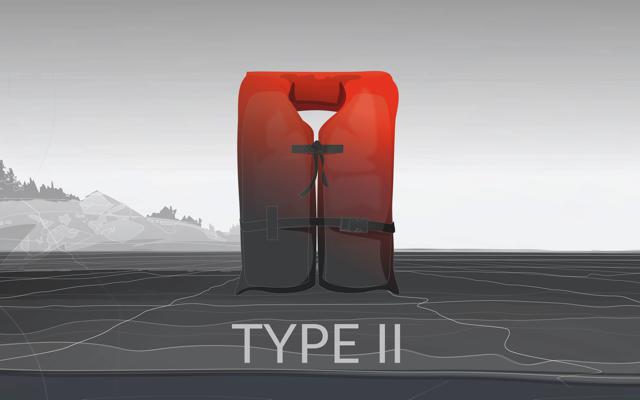
Type II PFD’s – Near-Shore Buoyant Vests: Type II PFD’s are meant for wearers that will be boating close to shore in locations where there is a high chance of a quick rescue. Type II PFD’s are also wearable for long days of water and land adventures, still being buoyant while not super bulky.
Inflatable Type II PFD Minimum Buoyancy: a minimum of 33.7 lb
Foam Type II PFD Minimum Buoyancy: a minimum of 15.5 lb
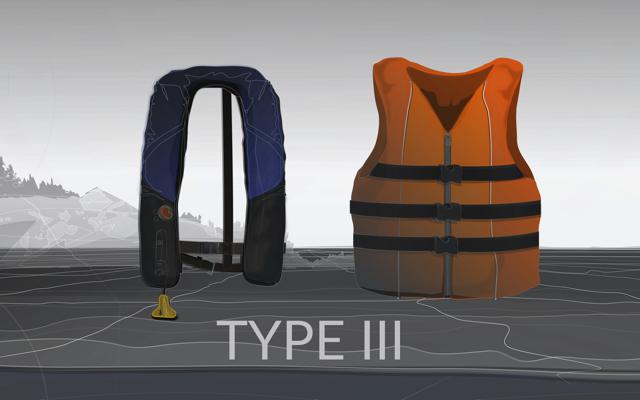
Type III PFD’s – Flotation Aids: Also known as inshore buoyant vests, Type III PFD’s are meant for situations in which the wearer can see the shore and the waters are relatively calm. Type III PFD’s, are designed with swimming and recreational boating activities and water-sports in mind.
Inflatable Type III PFD Minimum Buoyancy: a minimum of 22.5 lb
Foam Type III PFD Minimum Buoyancy: a minimum of 15.5 lb
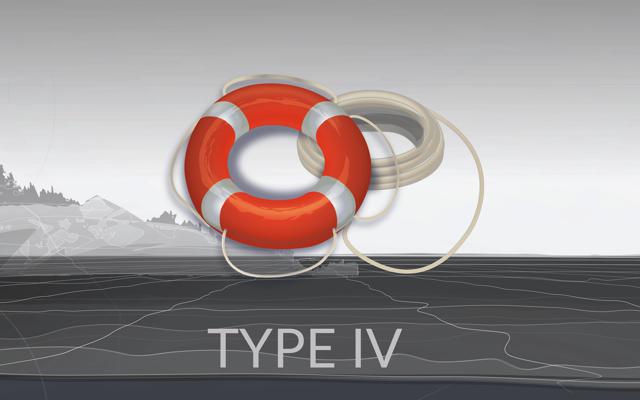
Type IV PFD’s – Throwable Devices: Type IV PFD’s aren’t life jackets but are designed to be thrown to a person needing rescue in the water (such as a buoyant ring, a life ring, etc).
Throwable Device Type IV PFD Minimum Buoyancy: A minimum of 16.5 lb
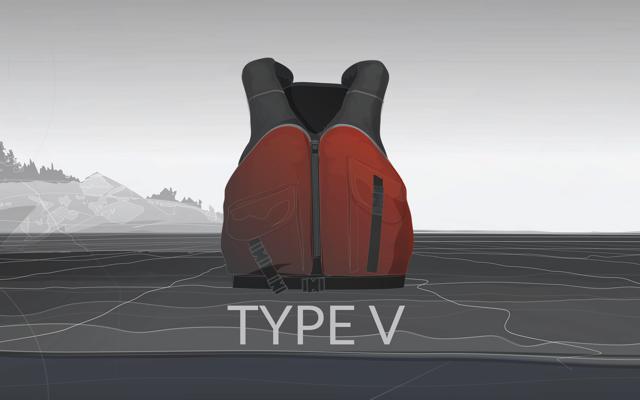
Type V PFD’s – Special-Use Devices: Type V PFD’s are specially designed for specific uses. From devices used to prevent hypothermia, or for rescue operations to those meant for kayaking, Type V PFD’s must be used according to their specifications. Some of these devices are not approved for certain activities, or must be worn to be approved for use.
Minimum buoyancy: Depends on specific PFD

New US Life Jacket Terminology (Performance System)
While life jackets categorized by type are still approved for use as long as they’re in good condition, the new US classification system for life jackets relies on performance categories.
Inherent Life Jackets: These devices are always buoyant (usually made of foam) and meant to float immediately without any action required by the wearer. They are adjustable, they are typically in vest form and they are of an accessible price and maintenance standard.
Inherent wearable life jackets are offered in a variety of performance levels, making them a great choice for most activity levels and environments.
Inflatable Life Jackets: These devices inflate with air (usually with an installed gas canister) and are activated when the wearer pulls the tube to inflate them. Inflatables come in a variety of performance levels, but are never recommended for weak or non-swimmers, children or those on personal watercraft.
Inflatable life jackets are also low bulk until inflated, making them a great option for constant wear.
Hybrid or Multi-Chamber Devices: These devices combine inherent material like foam along with an inflatable chamber. As Hybrid devices, these typically perform with full buoyancy without inflation, and inflation adds additional performance that can sometimes even include turning and freeboard.
However, Hybrid wearers must be aware of the ability of the device they wear to stand up to their performance. Some of these devices do not offer maximum buoyancy until inflated.
Special Purpose: These devices are meant for specific activities or restricted circumstances, and they often require extra training or action by the wearer. This classification lends itself to extra buoyancy for white water rafting or providing additional visibility, inflatable belt pouches or manual inflation devices.
New Performance System Label Icons
New life jacket labels will feature an icon and number to indicate the intended conditions for use. The numbers range from Level 50 – Level 275, with smaller level life jackets intended for use in calm water and close-to-shore scenarios, and higher level life jackets which are ideal for rougher waters, and situations where rescue may take longer.
Level 50: This performance level is recommended for users who have strong swimming skills, and are best for close-to-shore scenarios where immediate assistance is available. Life jackets of this type will not turn the wearer face-up in the water.
Level 70: This performance level is recommended for calm or sheltered waters that are close to shore, and where help is nearby. They will not turn the wearer face up in the water.
Level 100: This performance level is also recommended for use in calm waters, however they will provide enough flotation that the wearer will have more time to wait for rescue. They have some turning ability, but will not always turn the wearer face up.
Level 150: Devices of this performance level are more buoyant and are appropriate for off-shore scenarios, and will turn the wearer face up in the water.
Level 275: Devices with a 275 performance rating are the most buoyant and are designed for offshore emergency rescue situations. They can be used by SAR crews, and will handle the additional weight of tools, equipment, or clothing.
New life jacket labels will also feature a warning panel. This panel will include important information about the device and it’s intended use, in addition to indicating activities that are not recommended for the performance level of the device such as water-skiing, towed sports, and personal watercraft operation.
How to fit life jackets properly
Life jackets should be snug, comfortable, adjustable, and unable to rise above the wearer’s ears. Each person should wear a life jacket meant for their size, weight and body type and one that is intended for the situation that the wearer will be in.
These keys will help you to adjust your life jacket properly:
- Put on a life jacket and make sure all pieces are fastened and zipped loosely, adjusting from there
- After zipping up the life jacket, tighten from the bottom first and work your way up. Make sure that the bottom clasp is snapped in place
- Adjust each side adjustment to make a snug fit, and keep them even so that your life jacket doesn’t ride up on one side
- Tighten the shoulder straps last
- Once adjusted, raise hands above the head. If a life jacket rises above the wearer’s chin or feels incredibly tight, adjust it for another size. The wearer should be able to comfortably move in the life jacket
- When possible, do a fit-test in the water. Float onto your back to ensure the life jacket doesn’t ride up, slip over your head and keeps you afloat
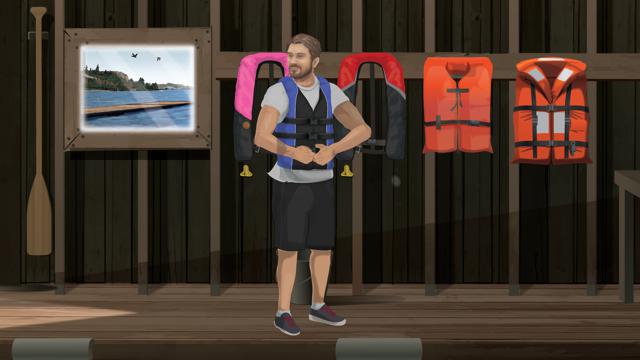
Life jacket best practices
Life jackets must be adequately maintained to ensure that they’ll work when needed, so it’s key to take care of life jackets. If you store and maintain your life jackets, they can last you for many seasons. Here are our tips for storing and maintaining life jackets so that they last:
- Wipe life jackets down with a gentle cleanser specifically made for life jackets
- Store life jackets in a well-ventilated area, and let them drip dry first
- Check life jackets each season for any loose fastenings, rips or tears
Note: Do not lay jackets in direct sunlight or heat, as this can eventually affect their buoyancy.
Safety is everything to us at BOATsmart!. Always make sure that every boat and personal watercraft operator around is legally — and responsibly — able to be on the water. In California, almost every boater is legally required to have a California Boater Card.
By using BOATsmart! for your boating safety education, you’ll be prepared for any water adventure that comes your way. With animated and narrated lessons built to capture your attention and root in your memory, our courses are perfect for each and every age of boater. As a Coast Guard and NASBLA-approved boating educator, we’re the best choice for an efficient, accredited and info-packed boating safety education course.
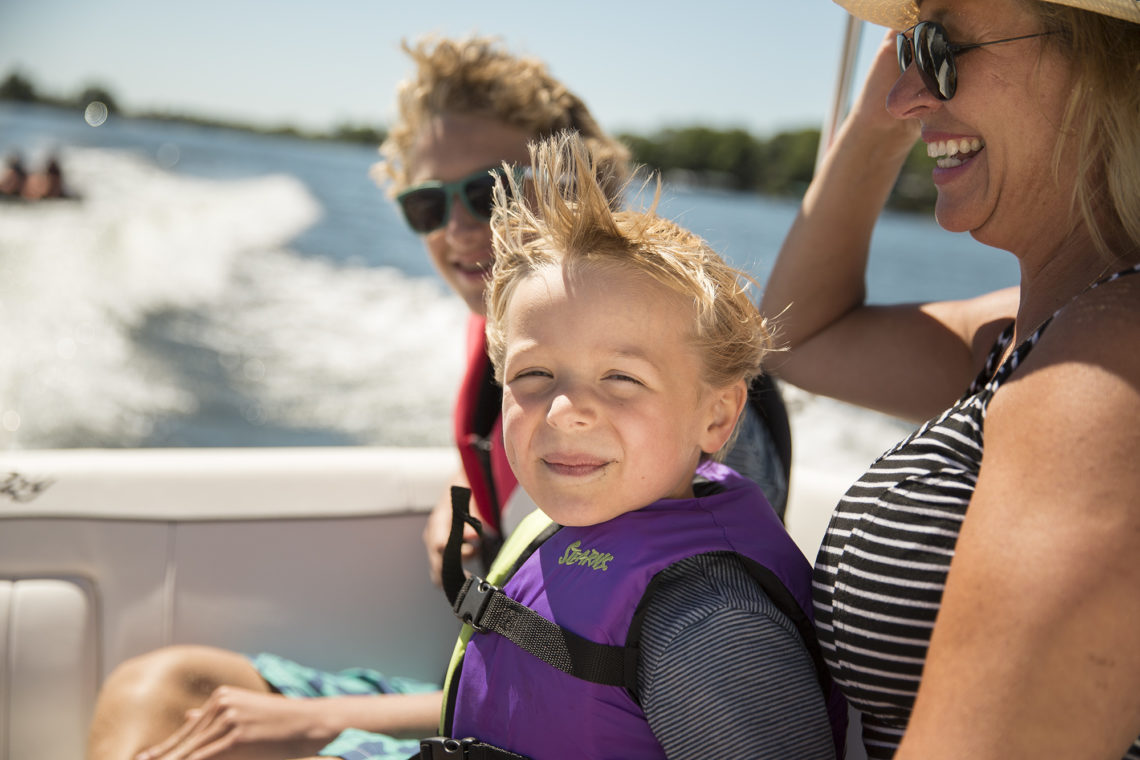

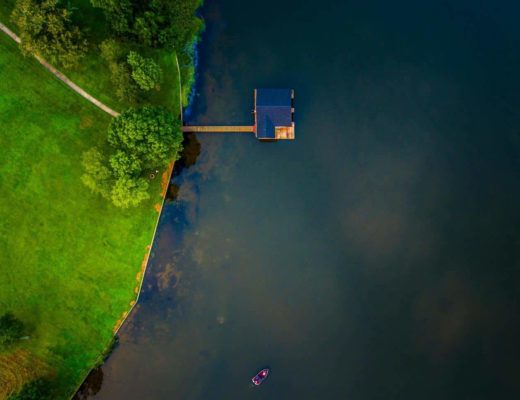


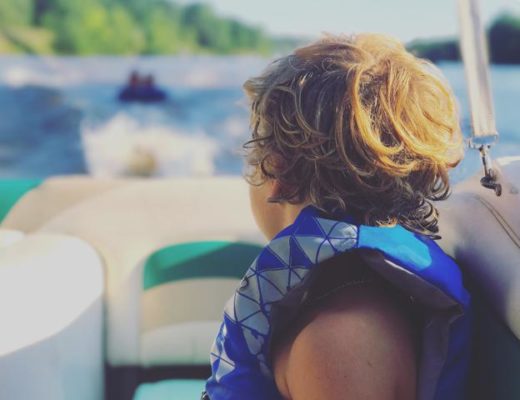

There are 108 comments
Pingback:what is dapoxetine
Pingback:hydroxychloroquine sulfate 300 mg
Pingback:hydroxychloroquine malarial dosage for humans
Pingback:buy hydroxychloroquine sulfate online
Pingback:amlodipine and ivermectil drug interaction
Pingback:dapoxetine price in india
Pingback:soolantra capsule 6 mg uses
Pingback:ivermectin 125 mg
Pingback:ampicillin and stromectol
Pingback:deltasone for staph
Pingback:stromectol red and black capsule
Pingback:buy stromectol for dogs canada
Pingback:cheap stromectol for covid
Pingback:stromectol 875 mg for lymphatic filariasis
Pingback:hydroxychloroquine french trial
Pingback:ivermectin price in india
Pingback:canine ivermectin toxicity
Pingback:stromectol usa
Pingback:what is ivermectin used to treat
Pingback:ivermectin 1.87% humans
Pingback:best viagra tablet price in india
Pingback:sildenafil pharmacy uk
Pingback:petsmart pharmacy
Pingback:where can i buy cialis without a prescription
Pingback:hydroxychloroquine online sale
Pingback:stromectol over the counter for sale
Pingback:over the counter viagra online
Pingback:generic tadalafil india
Pingback:viagra over the counter australia
Pingback:where to buy ivermectin uk
Pingback:Anonymous
Pingback:Anonymous
Pingback:Anonymous
Pingback:ivermectin in canada
Pingback:buy ivermectin online
Pingback:ivermectin in canada
Pingback:ignition casino united states
Pingback:stromectol for sale
Pingback:buy ivermectin online
Pingback:buy prednisone 5mg pills
Pingback:cialis reviews
Pingback:tadalafil
Pingback:ivermectin 50ml
Pingback:stromectol generic
Pingback:viagra cialis cheap online
Pingback:tadalafil femme
Pingback:how to buy viagra usa
Pingback:buy stromectol pills
Pingback:cialis drug
Pingback:cialis paypal viagra
Pingback:sildenafil citrate tablets
Pingback:cialis dosis
Pingback:tadalafil cost walmart
Pingback:tadalafil vidal
Pingback:ivermectin where to buy for humans
Pingback:sildenafil citrate for sale
Pingback:sildenafil tablets australia
Pingback:generic
Pingback:india pharmacy cialis
Pingback:tadalafil pills
Pingback:buy prednisone without
Pingback:buy prednisone 5 mg
Pingback:merck covid 19 pills
Pingback:tadala
Pingback:otc tadalafil
Pingback:tadalafil kaufen
Pingback:cost of ivermectin lotion
Pingback:prednisone side effects in dogs
Pingback:can i buy viagra
Pingback:generic cialis
Pingback:usa online casinos
Pingback:cheap cialis india
Pingback:ivermectin price canada
Pingback:ivermectin cream canada cost
Pingback:biggest no deposit welcome bonus
Pingback:tadalafil femme
Pingback:cialis online pharmacy
Pingback:buy canadian generic viagra online
Pingback:generic for cialis
Pingback:ivermectin pills for people
Pingback:ivermectin side effects
Pingback:does ivermectin work
Pingback:ivermectin lotion
Pingback:ivermectin 0.08%
Pingback:lasix vs furosemide
Pingback:lasix cheap
Pingback:ivermectin us fda
Pingback:ivermectin 8000
Pingback:stromectol uk
Pingback:stromectol drug
Pingback:ivermectin paste
Pingback:lucky land slots.com
Pingback:ivermectin 3mg dose
Pingback:ivermectin side effects
Pingback:buy generic stromectol
Pingback:how to get ivermectin in canada
Pingback:purchasing ivermectin
Pingback:ivermectin 12
Pingback:ivermectin 1%cream
Pingback:ivermectin cream 1%
Pingback:buy cialis 20mg
Pingback:ivermectina 6mg for sale
Pingback:does merck make ivermectin
Pingback:ivermectin rezeptfrei
Pingback:horse paste ivermectin
Pingback:where to buy stromectol online
Pingback:where can i get propecia online
Pingback:buy propecia new zealand
Comments are closed.